Everywhere You Look
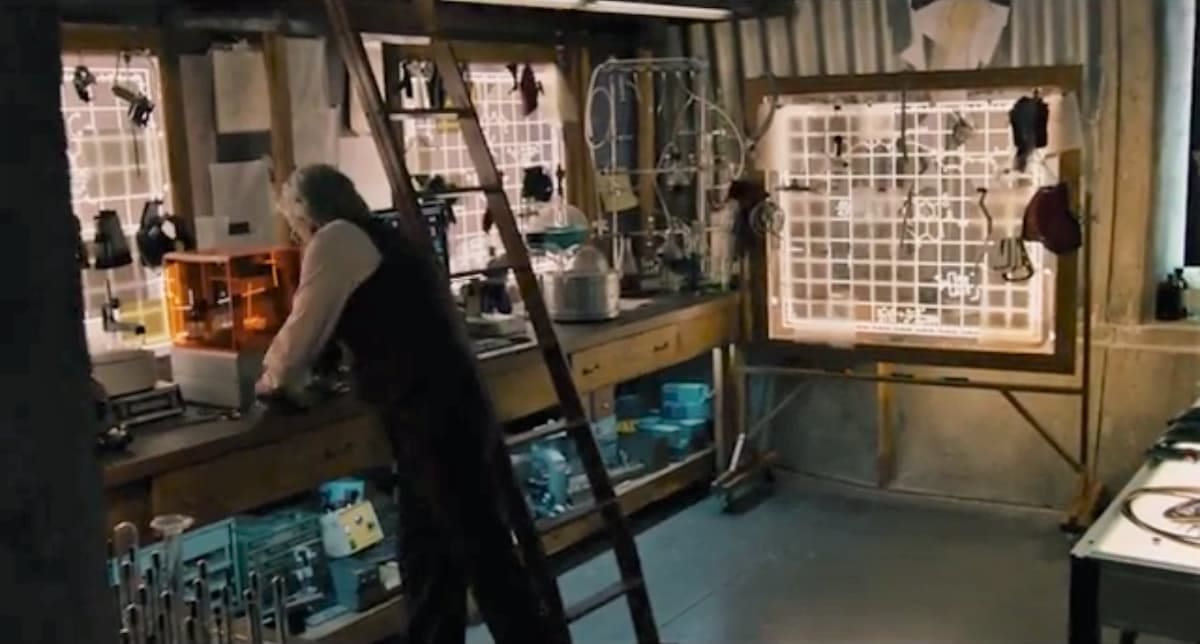
3D printing is already changing the world in remarkable ways, and it’s easy to understand why filmmakers are utilizing this futuristic technology. Whether it’s adding an element of futurism to the set, or merely characterizing the film’s tech-guru, seeing 3D printers on the big screen is inspirational, and it’s likely to propel the technology into a new and exciting direction.
Naturally, 3D printing is also being used behind the scenes to produce props. That was the case for some of the armor used in Iron Man 2 as well as the spiders in the Harry Potter films.
Nevertheless, in this article, we focus on the instances where a 3D printer was used or appeared in a film, and we’ve picked eight perfect examples of 3D printing in movies.
Spoiler alert: In order to describe the 3D printers in the following films, some aspects of the storylines are revealed.
Star Trek (1987)

Star Trek’s replicator is perhaps the most famous “3D printer” of all time. The device could create and recycle objects and was also used to synthesize meals on demand. In fact, the name is what inspired the name of MakerBot’s iconic Replicator, which is considered by some to be the “Macintosh” of 3D printers.
Gene Roddenberry envisioned a world of sheer material abundance for Star Trek, and he made it possible using the replicator. This smart technological device rearranged subatomic particles to synthesize any object in thin air. As the user, all you had to do was voice the object you had in mind. The replicator could even recycle matter back into energy.
In the Star Trek universe, the device used raw stock and a variant of transporter technology. From this stock, it “beamed out” matter and changed the molecules to match pre-established molecular patterns.
Naturally, some argue that the replicator doesn’t qualify as a 3D printer. This is largely because it uses instantaneous materialization and not a regular 3D printing technique.
Darkman (1990)
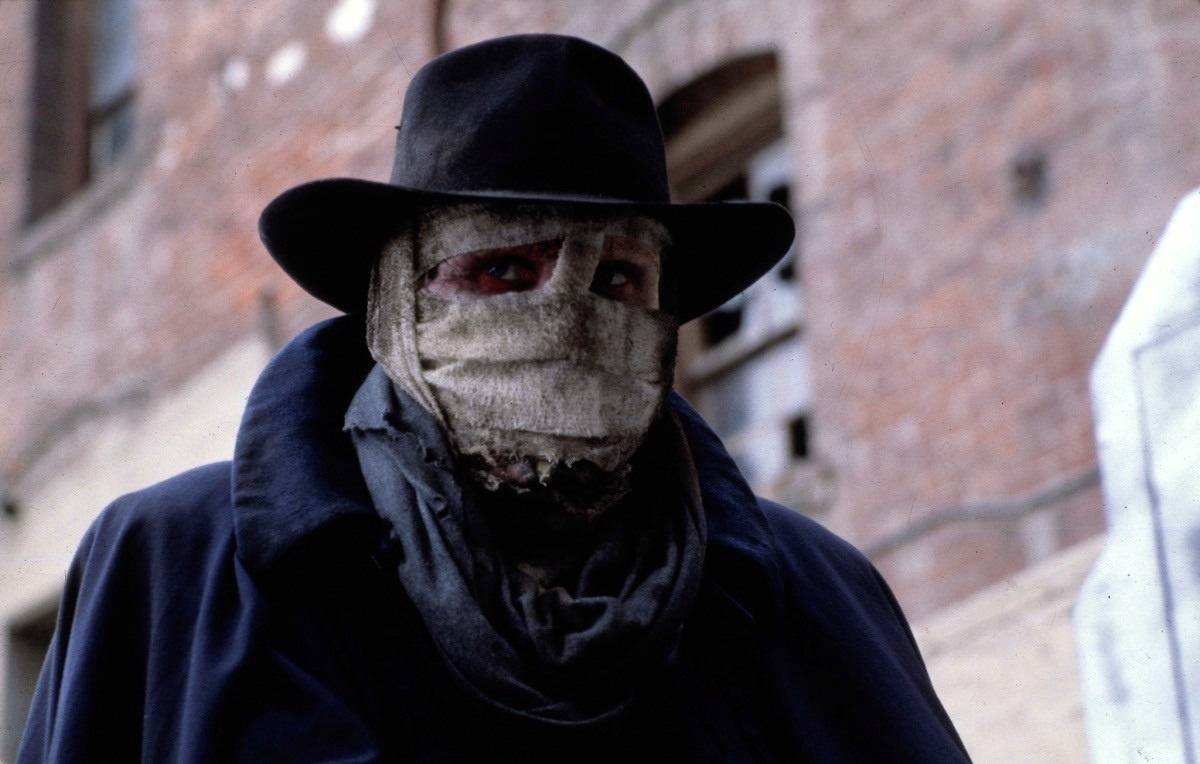
Darkman is probably the first movie that features 3D bioprinting.
In the film, Dr. Peyton Westlake (Liam Neeson) is working on a technology to synthetically generate skin. He’s inching closer to perfecting his project, except the skin produced by the technology disintegrates after 99 minutes of light exposure.
In the meantime, a group of henchmen breaks into his laboratory in search of a legal document that’s believed to be in the hands of his girlfriend, Julie Hastings (Frances McDormand). Engaged in a scuffle, Dr. Westlake is severely injured and becomes hospitalized as John Doe.
Due to adrenal overload, the doctor – now having enhanced strength – breaks out of the hospital and finds his way back into the destroyed laboratory with the sole mission of building new body parts to replace his burnt ones.
Using digital photo imaging and what resembles a proto-3D-printer using skin cells, he manages to create an assortment of face masks. With these, he is able to conceal his disfigured face and venture out on a revenge mission, infiltrating the enemy’s organization.
The Fifth Element (1997)
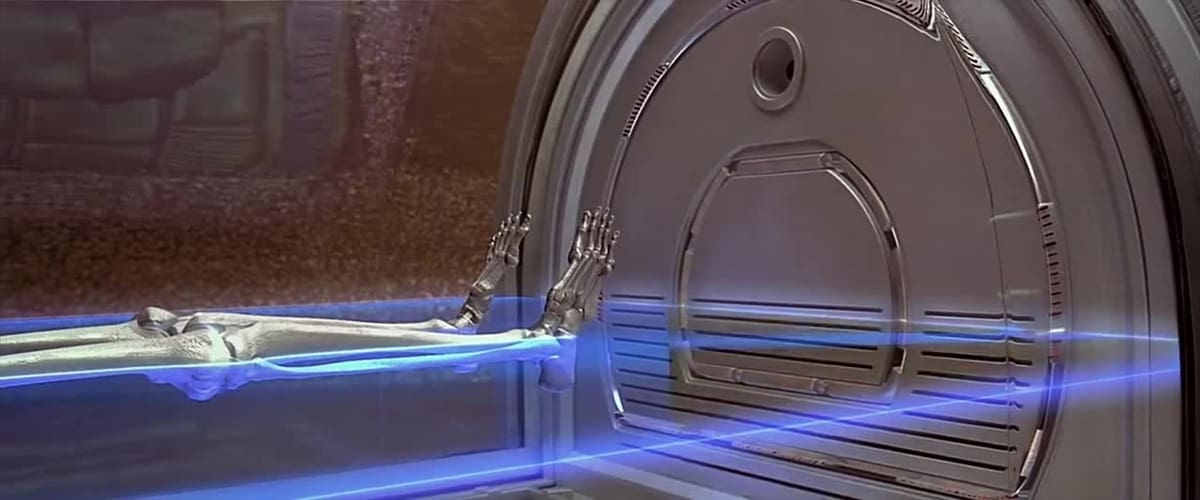
The Fifth Element was a “visionary” movie featuring a massive and advanced 3D bioprinter. Using a special type of “ink” to produce bones and muscles, it produces Leeloo (Milla Jovovich). During the process, Professor Mactilburgh explains that they’re “knitting” her before they can expose the new body to greasy solar atoms, which would enable skin to grow
Although printing bodies in the style of the movie might be a little ways off, 3D printing synthetic human tissues is already a reality. Indeed, 3D printing organs for transplant is no longer a dream. At least in research settings, 3D bioprinters have already produced human ears, muscles, and jaw bones.
Jurassic Park III (2001)
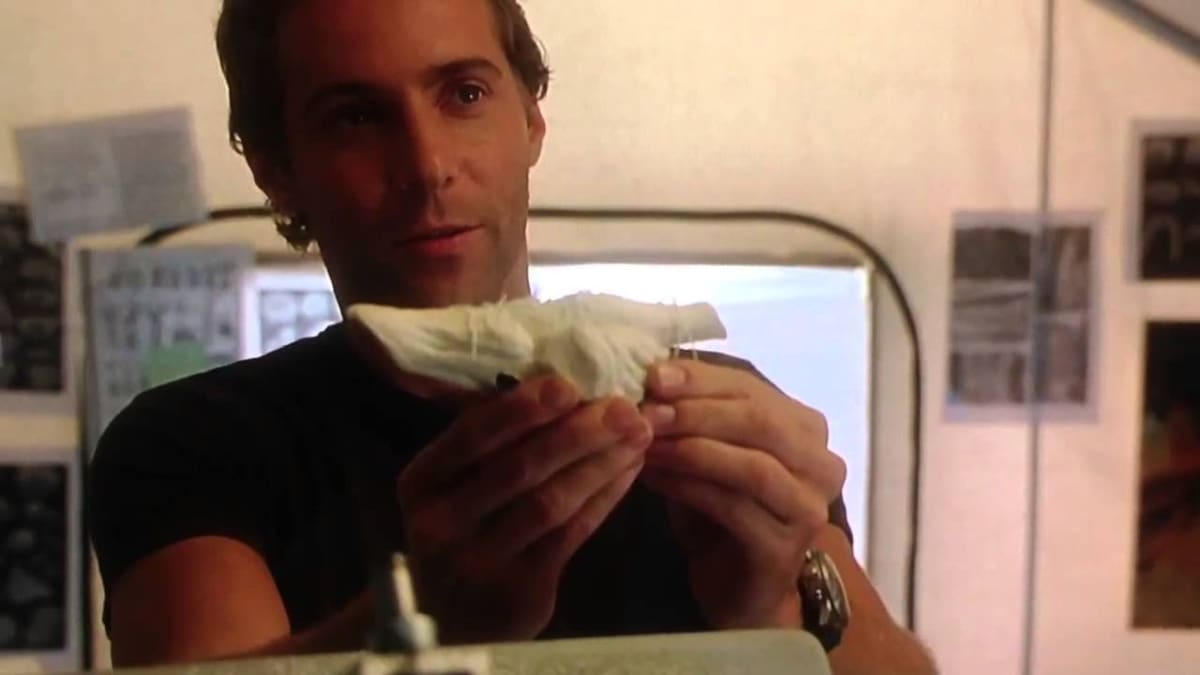
In Jurassic Park III, a group of paleontologists uses a 3D printer to recreate a velociraptor’s resonating chamber. The replica is then used to “communicate” with the raptors later in the film.
The “rapid prototype” machine portrayed in the film can mechanically sculpt parts and objects in 3D using scanned information and computerized drawings. It uses laminated object manufacturing to build – in layers – a solid replica of the original and produces the raptor larynx from a 3D scan.
In the exact scene where the machine is used, Dr. Alan Grant (Sam Neill) asks Billy Brennan (Alessandro Nivola) if he has rented an electronic litter box. Billy replies that it’s a rapid prototyper, where he feeds in the digital data from the raptor skull.
According to Billy, the computer organizes the uploaded data into slices that the machine then prints a single layer at a time. From the dialogue, the words slices, layer, rapid prototype, and scan data are thrown around.
Sound familiar? Of course they do! These are words that get used on an almost daily basis in any 3D printing environment.
Mission: Impossible III (2006)
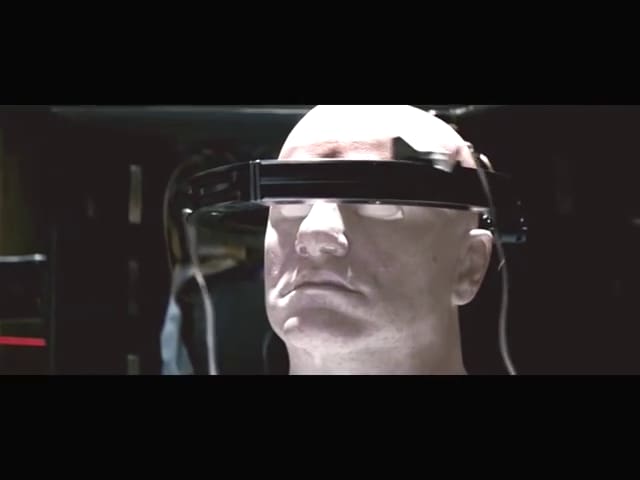
Since the 60s, face masks have been playing a pivotal role in the Mission: Impossible franchise. Agents typically disguise themselves in latex masks to extract valuable information from unsuspecting targets or to waltz through security unnoticed before they peel off the face masks, disclosing their true identities.
In Mission: Impossible III, a 3D printer is used to create a new version of Owen Davian’s (Phillip Seymour Hoffman’s) head. The Impossible Missions Force (IMF) prints the mask after 3D scanning Davian’s head, and Ethan Hunt (Tom Cruise) is tasked with wearing the mask to conceal his identity.
While it’s possible to create a mask from scanning, the sophistication seen in Mission: Impossible III is still unachievable. This is according to a technology expert from a UK-based visual effects company called FBFX, which focuses on 3D scanning, CNC robotic milling, and prop building.
According to them, the issue is not the printing but the fact that the mask needs to undergo heavy post-processing before it is ready to use. Typically, a 3D printed mask requires molding before it can be worn, but this is not the case in Mission: Impossible III.
You would also have to take into consideration things like hair and skin tone, which are ignored in the film. In a nutshell, the 3D printing technology used in Mission: Impossible III is still a fantasy.
Ocean’s 8 (2018)
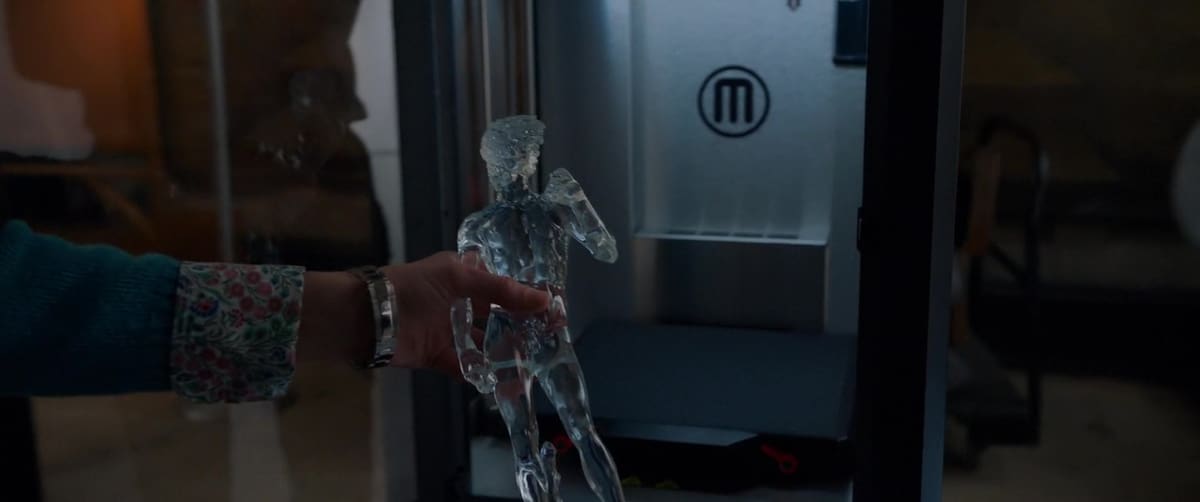
In Ocean’s 8, a team of scammers, led by Sandra Bullock and Cate Blanchett, plan to get away with a diamond-encrusted Jeanne Toussaint necklace by creating a replica.
The crew uses a pair of camera glasses with a built-in 3D scanner to get a digital image of the $150-million necklace by Cartier. The high-tech glasses can scan any object and upload the structure to the cloud. The wearer is only required to stare at the object in question – from various angles – until the lenses flash “100%”.
Once the team receives the digital file, the knockoff is 3D printed in a MakerBot Replicator. The 3D printed replica – made using zirconium – is visually near-perfect and is used to trick everyone, including Daphne Kluger (Anne Hathaway). But not until it is subjected to a jeweler’s magnifying loupe.
Critics are adamant that the 3D printing technology we currently have available is incapable of dummying expensive bling. In fact, it would seem to be the case that it is almost impossible to print an authentic-looking gemstone – for now, at least.
According to Shapeways’ CEO Gregory Kress, the closest thing you could achieve would be printable using transparent red resin or plastic. Zirconium, which is the primary material used for the film’s fake necklace, is still impossible to 3D print, especially when you want it to be at par with Cartier standards.
The Cloverfield Paradox (2018)
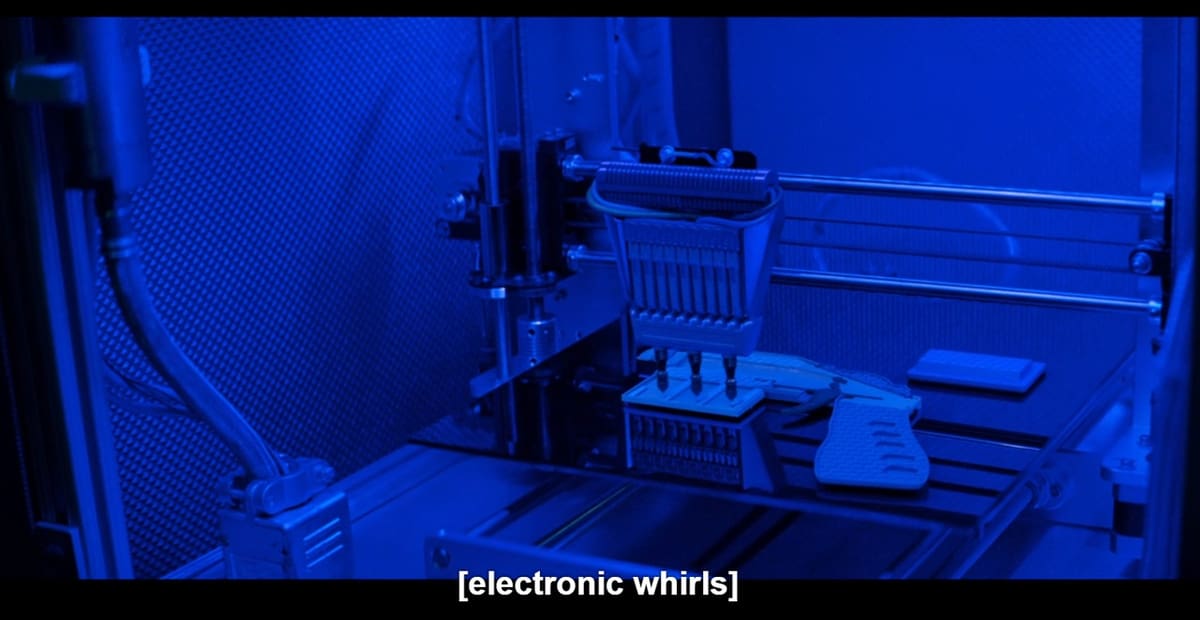
In the Cloverfield Paradox, which is set in a parallel universe 10 years in the future, Volkov (Aksel Hennie) loses his mind when he discovers unearthly parasites under his skin while aboard the space station.
However, that’s not the only strange thing happening within Cloverfield Station. For one, as the crew works on repairs, they stumble upon a strange woman named Mina Jensen (Elizabeth Debicki), who is entangled in wires inside a wall and surprisingly knows almost all the crew members.
Jensen maintains that Ava, another crew member, was not supposed to be on the mission and plants a seed of mistrust and doubt within the group. Meanwhile, Schmidt (Daniel Brühl) is suspected to be a German spy, and Irish engineer Mundy (Chris O’Dowd) has his arm sucked into a wall.
Eventually, Volkov is compelled to use the space station’s 3D printer to print a gun, with the intention of killing the others…
3D printing weapons is not a new concept within the 3D printing community. However, the current situation has seen the corresponding files banned in most countries.
Hotel Artemis (2018)

Jean Thomas (Jodie Foster) is the manager of a members-only hospital named Hotel Artemis. She is better known as “the Nurse”, a sharp and fearless “medic” who has access to a 3D printer for internal organs. In this black-market setting, Jean, with the help of her assistant, Everest (Dave Bautista), “treats” a mix of thieves, gangsters, gunrunners, and assassins.
This movie is also set 10 years in the future, and the organ-printing machine can only reproduce what is fed into it. If a staunch smoker offers a lung, for example, the reproduced organ would be just as damaged and as dark as the original.
While Jean is committed to patching up her patients, her guests seem to be constant troublemakers who find themselves in all sorts of trouble. Throats are cut, and a man is killed using the 3D printer, which smashes his skull.
Guns, which are supposedly “printed” at Hotel Artemis, are also brandished and fired during battles. It’s an endless bloody affair, but what else do you expect when you’re dealing with hardcore criminals?
Feature image source: CinemaBlend / YouTube